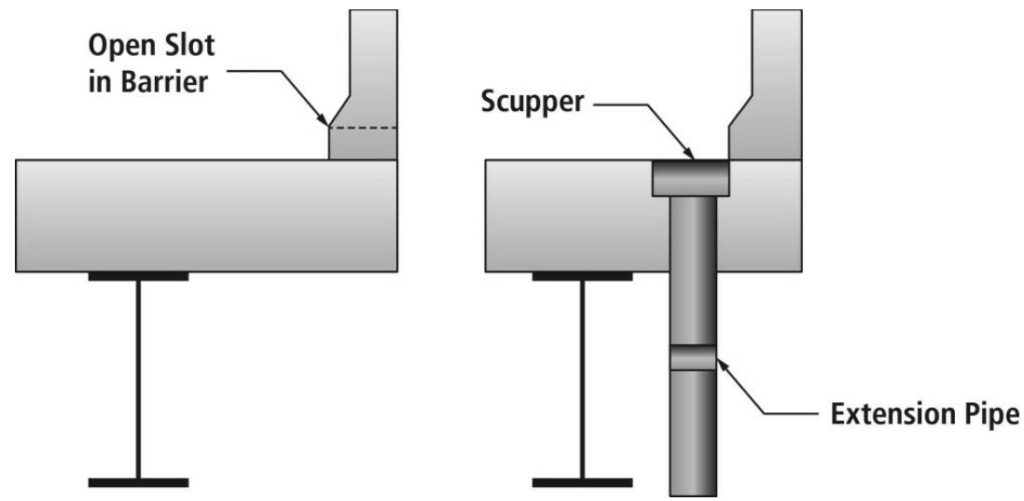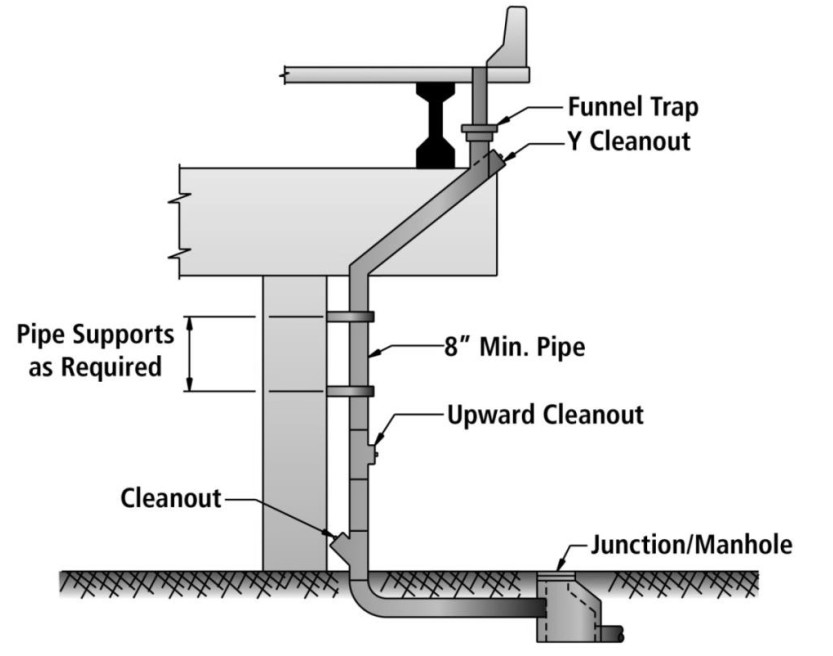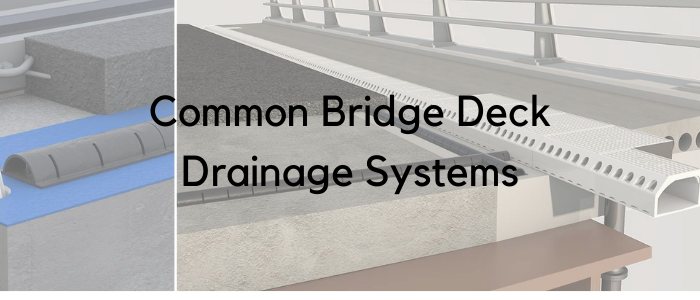Common Bridge Deck Drainage Systems
The typical definition of a bridge is “a structure built over an obstacle such as a river, road, or railway so that people or vehicles can cross from one side to the other. This means a bridge is elevated above the ground. When it rains, there should be means to transport the rain water to the drainage system which is typical below ground level.
This article will walk you through the common types of drainage systems used for bridge decks.
Objective of Deck Drainage System
The bridge deck drainage system is typically composed of multiple components such as the bridge deck, sidewalks, railings, gutters, scuppers/inlets and open or closed piping.
The main purpose of the drainage system is to take a way the runoff water for the top surface of the deck prior to its collection in the gutter or lanes.
Well-designed drainage system should reduce maintenance activities.
Benefits of Well-designed Drainage System
- Removing the water from the surface of bridge in an effective and efficient method, reducing the relevant risks of hydroplaning and protects the public safety.
- The repair/maintenance costs throughout the expected service life of bridge will be reduced.
- Efficient drainage helps the bridge to reach its designed service life by preserving its structural integrity.
- Water may compromise the aesthetics of a bridge by staining so a well designed drainage system prevents this.
- Decreased erosion on bridge end slopes.
Types of Drainage Systems
Open Drainage Systems
The open system for deck drainage is a vertical or horizontal through the bridge curb or the bridge deck at curb line. The horizontal drainage slots are often made as a part of the bridge barrier curb construction and are arranged at close distances based on the small slot size.
Although beneficial, this system may experience clogging by debris and thus, needs continuous maintenance. Furthermore, in this case, this system permits the water contaminated with chlorides and chemicals to contact directly parts of the superstructure. Contaminated water can cause other deterioration mechanisms for concrete such corrosion and spalling.
Comparatively, vertical penetrations are often made as a circular hole thru the bridge deck itself, or a scupper or inlet with pipe extension thru the bridge deck.
The primary situation where open drainage systems are applied is when there are no associated concerns regarding the environmental effects or potential flooding as a result of the runoff below bridge. Also, when no existing working facilities operating beneath the bridge.

Closed Drainage Systems
Compared to the open deck drainage systems, the closed one consists normally of scuppers/inlets made at the deck surface; however, with a closed piping which transmits the runoff from the scuppers down to a drainage inlet point at the ground level.

Closed systems are equipped with proper preset locations for maintenance works making them suitable for application where there are environmental-related concerns; for example, erosion and/or flooding.
What are Scuppers?
A bridge scupper is a vertical opening made within the bridge deck to allow water drainage from the deck. A scupper can also be horizontal hole in the curb since it performs the same function for drainage.

What are Bridge Inlets?
The terms scupper and bridge inlet are usually used interchangeably. Generally speaking, the inlet has a bigger opening relative to the scupper. Thus, inlets gather more run off and need less frequent maintenance works.
Inlets consists of a casting/fabricated inlet base with a cast/fabricated grate.
What are Troughs?
In case the joints of a deck are open, a trough comes to use under this open deck to transfer the water/debris away from the bridge components.
Old troughs used to be made of steel the experienced corrosion and requires frequents repairs. Nowadays, troughs are made of elastomeric sheets that are easy to clean and maintain.

Read Also:
